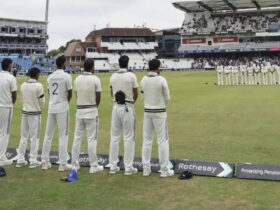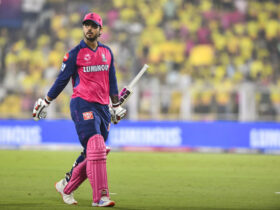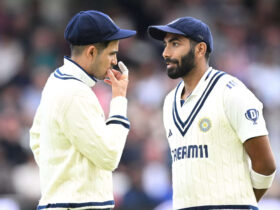Introduction: In a decisive move to prevent future tragedies, the Board of Control for Cricket in India (BCCI) has taken a significant step following the heart-wrenching stampede at Bengaluru’s iconic M Chinnaswamy Stadium. The incident, which claimed 11 innocent lives, has prompted soul-searching within the cricketing fraternity about the safety of fans during high-octane celebrations. As the nation mourns, the BCCI’s response signals a commitment to ensuring such a tragedy never repeats.
Breaking News: On Saturday, June 14, during the 28th Apex Council Meeting held in New Delhi, the BCCI announced the formation of a three-member committee tasked with drafting comprehensive guidelines for post-match and victory celebrations. The committee, chaired by BCCI secretary Devajit Saikia, includes senior board official Rajeev Shukla and board member Prabhtej Singh Bhatia. They have been given a tight deadline of 15 days to submit their recommendations, reflecting the urgency of the matter.
Details of the Tragedy: The stampede in Bengaluru unfolded during a public celebration of Royal Challengers Bengaluru’s (RCB) long-awaited maiden IPL title after an 18-year wait. As thousands of jubilant fans gathered at the stadium to rejoice in RCB’s historic victory in the Indian Premier League 2023, an unexpected surge at the gates led to chaos. Poor crowd management and inadequate security measures have been cited as contributing factors, raising pressing questions about event planning and safety protocols during such emotionally charged occasions.
BCCI’s Stance and Vision: Expressing deep sorrow, the BCCI issued a statement: ‘The Apex Council is profoundly grieved by the tragic incidents in Ahmedabad and Bengaluru, which resulted in the tragic loss of lives. To prevent such occurrences, we have constituted a committee to formulate guidelines for future celebrations.’ The upcoming guidelines are expected to address critical areas such as crowd control measures, stadium capacity restrictions, emergency response protocols, and enhanced coordination with local authorities. This initiative could set a precedent not just for cricket but for all major sporting events in India.
Context and Significance: This is not the first time Indian cricket has faced challenges with crowd safety. Historically, incidents during high-profile matches, such as the 1996 World Cup semi-final at Eden Gardens, have exposed vulnerabilities in event management. With cricket being more than just a sport in India—a cultural phenomenon that unites millions—the stakes are extraordinarily high. The BCCI’s proactive approach could redefine how victory celebrations are conducted, ensuring that the joy of triumph is never overshadowed by tragedy.
Conclusion: As the nation awaits the committee’s recommendations, the Bengaluru stampede serves as a somber reminder of the responsibilities that come with organizing large-scale events. The BCCI’s initiative to draft victory celebration guidelines is a step toward safeguarding the spirit of cricket and its passionate fans. While RCB’s IPL triumph will forever be etched in history, it is now intertwined with a call for change. Will these guidelines mark the beginning of a safer era for Indian cricket? Only time will tell, but the intent is clear—fan safety must come first.





















